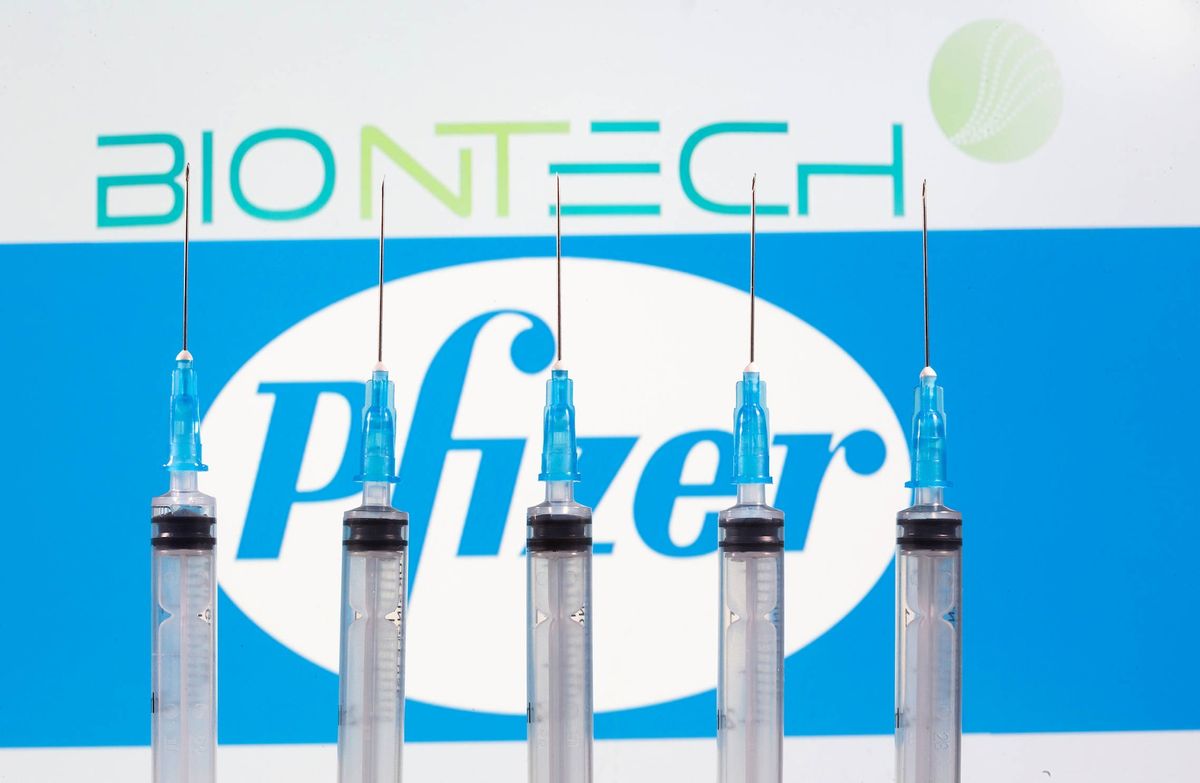Pfizer’s COVID-19 vaccine, explained

A few minutes every morning is all you need.
Stay up to date on the world's Headlines and Human Stories. It's fun, it's factual, it's fluff-free.
Though Pfizer’s trial results are undoubtedly good news, it will not bring the coronavirus pandemic to a sudden halt. People must remain vigilant and take precautions.
After a year in which most of the global community has had to learn – with varying degrees of success – to live with the COVID-19 pandemic, the first truly promising signs of a COVID-19 vaccine are beginning to show.
American pharmaceutical giant Pfizer Inc., in collaboration with its German partner and vaccine developer BioNTech SE, has announced that the preliminary results of its vaccine show that it is more than 90% effective in preventing transmission of COVID-19 among trial volunteers.
With no side-effects yet reported and an efficacy rate far above the 50% required for emergency authorization, Pfizer’s and BioNTech’s development is the first major breakthrough in the global race for a COVID-19 vaccine.
Though Pfizer’s trial results are undoubtedly good news, it will not bring the coronavirus pandemic to a sudden halt. People must remain vigilant and take precautions.
The United States recently passed 10 million confirmed COVID-19 cases. With a widespread rollout of any potential vaccine still months away, the “very dark winter” highlighted by President-elect Joe Biden remains a very real possibility.
Vaccine developments
Pfizer and BioNTech’s potential coronavirus vaccine has made headlines around the world, offering hope that the end of the COVID-19 pandemic is in sight.
A potential coronavirus vaccine was first put into development by the German company BioNTech in the city of Mainz in January, before the full extent of the coronavirus pandemic was known around the world. In March, BioNTech partnered with the American pharmaceutical giant Pfizer to begin human trials.
Now, in a trial that consisted of nearly 44,000 participants around the world, BioNTech and Pfizer’s vaccine has displayed an efficacy rate of some 90%. This means that of those given the vaccine during the trial, relatively few contracted COVID-19. These results suggest that a wide rollout of the vaccine would yield positive results worldwide.
The US Food and Drug Administration (FDA) has instituted a bar of 50% for vaccine makers before any potential vaccines are eligible to be submitted for emergency authorization. The 90% efficacy rate displayed by Pfizer’s potential vaccine more than crosses this threshold.
Anthony Fauci, the director of the National Institute of Allergy and Infectious Diseases, has hailed these results as “extraordinary.”
By the end of the year, Pfizer expects to have produced enough doses to immunize 15 to 20 million people, with the most vulnerable expected to receive the vaccine first. Nations around the world have already placed orders on Pfizer’s vaccine, with the US requesting 100 million doses.
Experts cautioned that while Pfizer’s news is encouraging, it does not mean an end to the pandemic. Linda Selvey, an infectious diseases epidemiologist at the University of Queensland, Australia, told Bloomberg that the news “is very encouraging, however, it will not, on its own, mean that we will be able to resume ‘business as usual’ any time soon.”
Back into lockdown
However, news of Pfizer’s development comes at a time of little other good news regarding the coronavirus.
Trials of other vaccines around the worlds have hit complications. In Brazil, trials of the CoronaVac vaccine, produced by Chinese company Sinovac Biotech Ltd., which is already being deployed in China, were halted after health authorities reported a “severe adverse” incident in October.
Nations around the world are also experiencing a resurgence of the virus as winter approaches. This has led countries to once again take stringent measures to deal with rising case numbers.
The United Kingdom recently entered a second period of sustained lockdown while other European nations that haven’t already instituted similar lockdown measures are said to be considering them once more.
In the US, the continued surge of coronavirus cases has belied President Donald Trump’s claim that after the election “you won’t hear anything about it because we’re rounding that turn.”
Not only have COVID-19 cases in the US continued to grow, they never receded in the first place. The death toll in the US is now close to 240,000, with total cases in the country now over 10 million. Meanwhile, the average number of deaths in the US remains around 1,000 a day.
While encouraging, full-scale vaccination, both in the US and globally, appears some time off.
High-risk members of the population will be first in line to receive any potential vaccine, which could happen before the end of the year. For the wider population, however, the availability of any potential COVID-19 vaccine could stretch into 2021. That’s if no complications arise in the meantime, which is not guaranteed.
The worldwide rollout of the Pfizer and BioNTech vaccine is also uncertain. The vaccine needs to be kept at especially cold temperatures, which may pose logistical issues for many developing countries.
Nonetheless, data from Pfizer’s trial is encouraging and signals that the world may be one step closer to finally seeing an end to the coronavirus pandemic.
Have a tip or story? Get in touch with our reporters at tips@themilsource.com




Comments ()